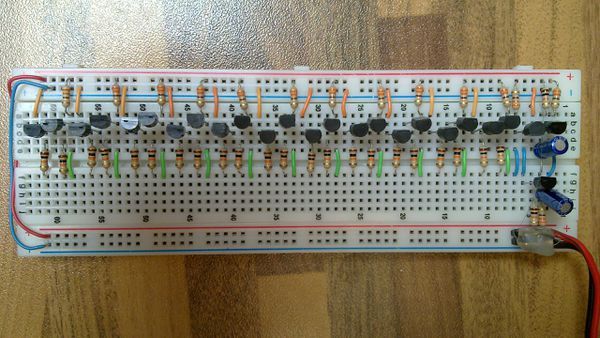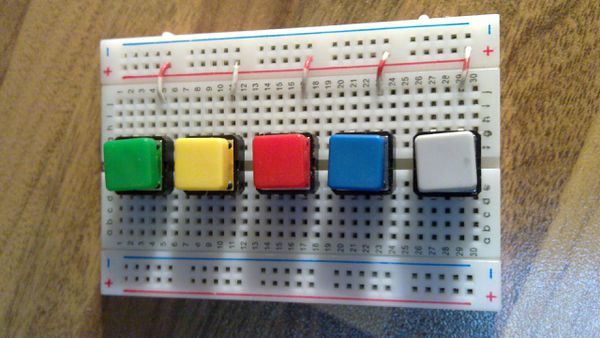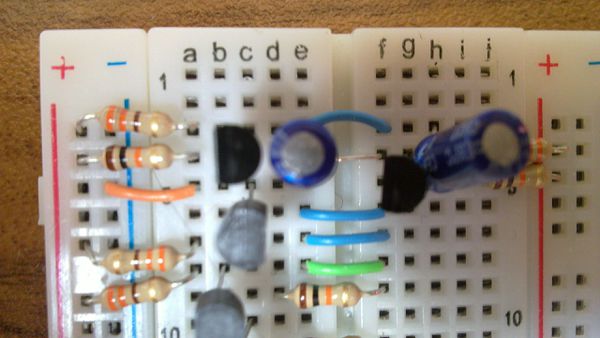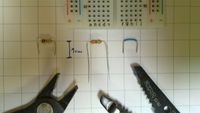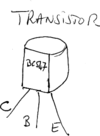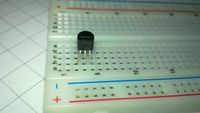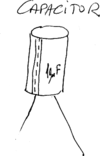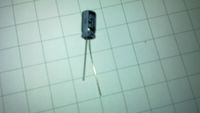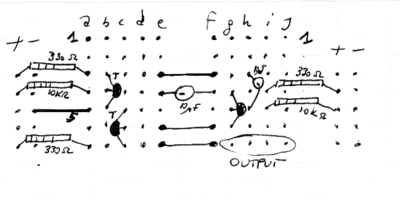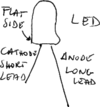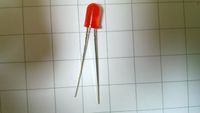Differenze tra le versioni di "No more secrets Part 2: Let us build the experimental board"
| Riga 36: | Riga 36: | ||
=== How to build the master clock === | === How to build the master clock === | ||
| + | |||
| + | Schematics of the unit: | ||
| + | |||
| + | [[File:clock.jpg|600px]] | ||
For this unit you will need: | For this unit you will need: | ||
| Riga 72: | Riga 76: | ||
[[File: electrolytic.png|100px]] [[File: electrolyticsnapshot.jpg|200px]] | [[File: electrolytic.png|100px]] [[File: electrolyticsnapshot.jpg|200px]] | ||
| − | + | Install all the components and jumpers on the Breadboard as shown in this picture: | |
[[File: clockbreadboard.png|400px]] | [[File: clockbreadboard.png|400px]] | ||
Versione delle 10:46, 16 mag 2014
Ingredients
- #1 Standard Breadboard (63 rows, 5+5 holes for row, power and ground rails
on both sides)
- #25 BC547 transistors
- #24 10Kohm 1/4W resistors (colors: brown=1 black=0 orange=10^3 gold=5%)
- #14 330ohm 1/4W resistors (colors: orange=3 orange=3 brown=10^1 gold=5%)
- #4 led diodes (Red, 5mm are okay)
- #2 electrolyctic capacitors 10uF (microfarad) 16V
- #1 5V power supply (the tool uses at most 250mA) (instead of a power supply you may consider using a battery holder for three or four AA batteries, everything should work at 4.5 or 6V).
- #1 set of jumpers for breadboards.
- #23 0.3" jumpers
A piece of old multi pair telephone wire can be used to create the jumpers, both the 0.3" wide and the longer ones to build the experiments.
Tools needed: cable cutter or a pair of strong scissors. If you have a wire stripper it is useful, although not strictly needed.
If you like, it is clearer during the experiments to provide the inputs using buttons instead of moving jumpers. In order to build a keypad for the input you need:
- #1 another breadboard (maybe smaller than the one above, I'm using a 30
rows one)
- #5 or more buttons for breadboards
- #5 jumpers (which can be created using the old telephone cable).
The board(s) implements:
- #1 1Hz master clock
- #11 NAND gates
- ... and #5 buttons on the second board
How to build the master clock
Schematics of the unit:
For this unit you will need:
- #3 transistors
- #3 330ohm resistors (orange-orange-brown)
- 2 10Kohm resistors (brown-black-orange)
- 2 10uF capacitors
- 4 0.3" jumpers
Fold the pins of the resistors and trim their length 10 about 1cm as illustrated below:
Resistors are not polarized (provided that the pins are connected in the right positions of the breadboard, you don't need to pay attention on which end is which).
BC547 transistors are not cylindrical, they are flat on one side (usually there is the sign BC547 on that flat side). In order to recognize the three pins of a transitor (collector, base and emitter) you have to keep the transistor having the flat face towards you: in this position the three pins are C,B,E collector, base and emitter. (This is specific for BC547, other transistors may have different pin assignment).
Electrolytic Capacitors are polarized. The negative lead is normally marked by a white stripe having multiple minus signs on it ("- - - ").
This figure shows how to insert the components on the breadboard.
Install all the components and jumpers on the Breadboard as shown in this picture:
When all the components and the jumpers have been put on the breadboard, the circuit can be tested. Plug the power supply to the + and - rails on both sides (you can add jumpers to connect + and - of one side to the correspondent rails on the other). The blue rail should be connected to the negative, the red one to the positive.
Now plug a led diode to the master clock's output: push the longest pin of the diode (its anode) in a hole of the output row and its shortest pin (the cathode) to a hole of the minus rail. Does it blink? I hope so. If it does your master clock is working, if it not blinking doble check the position of all the components and jumpers.
